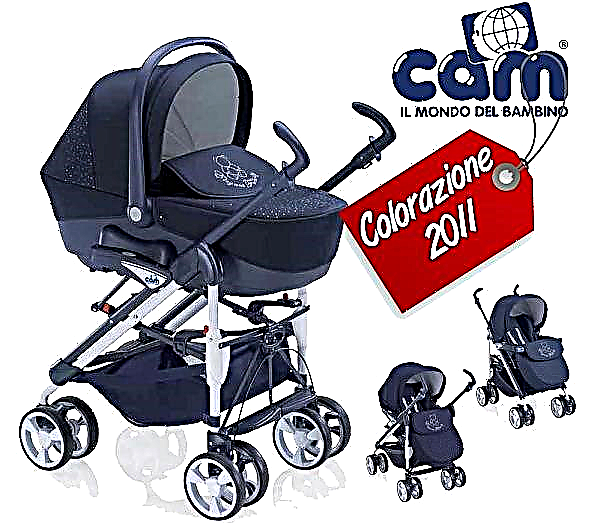
Food allergies are not uncommon for a baby of the first year. Its most striking manifestation, forcing the mother to look for reasons and start treatment, is a skin rash.
How does it appear and what does it look like?
Symptoms of food allergy in babies include:
- Skin rashes. The rash can cover the neck, skin folds, forearms, scalp, skin behind the ears and around the mouth, and other areas. Usually, these rashes are red and shiny and crust over. They can also appear as spots or itchy watery papules. These papules cover the back, buttocks, legs, external genitals, cheeks and other areas. The constant itching of such a rash makes the baby crying and irritable.
- Labored breathing. An allergy in an infant can manifest itself as a runny nose (clear discharge), coughing and shortness of breath, which is considered very dangerous, since the baby still has poor breathing control, and cannot breathe and eat at the same time when the nose is clogged.
- Digestive upset. It is expressed by regurgitation, bouts of vomiting, bloating, constipation, or diarrhea. Unlike viral infections, which manifest themselves in the same way, with an allergic reaction, the body temperature of the crumbs will be normal.
How long does it take to appear?
The first manifestations of an allergic reaction to the mixture in many children can be observed almost immediately after feeding - after 30-120 minutes. In general, allergy symptoms usually appear within 24-48 hours after the allergen enters the baby's body.
What can be allergic?
The food allergen most often encountered by a child's body in the first year of its life is proteins from cow's milk. And therefore, the occurrence of allergic reactions in response to the formula that the baby is fed with is often the case, since it is cow's milk that is the basis of most mixtures.
The main culprit for food allergies in babies under one year old is predisposition (parental allergy).
Among the factors predisposing to allergies in young children are also distinguished:
- higher permeability of the gastrointestinal tract membranes for large molecules;
- lower enzymatic activity;
- not yet developed beneficial intestinal microflora;
- insufficient secretion of immunoglobulins.
What to do?
The first step for parents when a rash is detected in a child should be to consult a pediatrician to make sure that the rash is indeed of an allergic cause. The doctor will rule out the possibility of contact dermatitis, reactions to medications, herbal teas, complementary foods and other sources. Only after that it can be argued that the mixture was the cause of the allergy.
Further actions will depend on the severity of the manifestations of the allergic reaction in the baby:
- If, at the same time as the rash on the skin, the baby has regurgitation and excess weight, reduce the volume of the mixture given or its concentration (the mixture is diluted for better digestion and reduction of fermentation processes in the digestive tract).
- With a moderate or insignificant amount of rash, you can try replacing the formula with fermented milk or an adapted mixture with pro- and prebiotics. Such nutrition will stimulate the development of lactic acid flora in the intestines.
- When the previous options did not work or the baby has a very severe rash, the allergen (cow's milk proteins) is excluded. The crumb is transferred to a mixture, the basis of which can be goat's milk, soy, or split proteins of cow's milk.

Control methods
The main steps against allergies are:
- Identifying the allergen.
- Excluding contacts with him.
In addition, the manifestations of the allergic reaction should also be alleviated. If these are problems with the skin, then you should exclude scratching, reduce dryness, eliminate flaking. If the crumbs have a runny nose, the nasal passages should be cleaned.
If the baby has shortness of breath, has a digestive disorder or hives, you should definitely call a doctor. In difficult cases, the baby has to be hospitalized.
Replacing the mixture
One of the preferred alternatives to the conventional mixture are products based on goat's milk. Its proteins are complete and have the same nutritional value as cow's milk proteins. However, their structure is different, so they are considered less allergenic.
The second option for changing the mixture is feeding the crumbs with soy mixtures. They include vegetable proteins, so their value is lower and absorption is worse. You should know that they are not adapted, therefore, they are recommended for children over six months old and only for a short period. In addition, soy proteins are also common allergens.
The third and most frequent option for changing the mixture is that hypoallergenic mixtures are selected for the child. We talked about them in detail in another article. Proteins in such milk mixtures are split - in whole or in part. According to the degree of cleavage, such mixtures are divided into prophylactic (in them proteins are hydrolyzed only partially) and therapeutic. The first is recommended for children who are at risk of allergies, and the second for those who have already experienced allergies.

The transfer of the infant to another mixture should be carried out gradually over a minimum of three to five days (and preferably within two weeks). This rule works even in case of allergies, because the baby needs to get used to the new diet. If you enter the mixture right away, digestive problems and the baby's refusal from the new mixture are possible.
Allergy to hypoallergenic mixture
The effect after transferring the crumbs to a hypoallergenic mixture (skin cleansing, stool normalization and other improvements) can be observed only after a while. So it is possible to evaluate the effect of the medicinal mixture only after 2-4 weeks.
Hypoallergenic formulas can also cause food allergies in babies, as many of them contain cow's milk proteins (albeit split), as well as lactose. If the doctor determines that the prophylactic mixture prescribed for the GA crumbs (it is on them that reactions often occur, since the proteins in such mixtures are not completely split) the baby also has an allergy, then he will recommend transferring the baby to the GA therapeutic mixture.
Only a pediatrician should decide on the transfer of crumbs to medicinal mixtures.
With mixed feeding, full transition to breast milk
Breast milk does not cause allergic reactions and is objectively better than any mixtures, even hypoallergenic ones. That is why when a food allergy develops in a mixed-fed baby, it is recommended to abandon the source of cow's milk, leaving only mother's milk in the baby's diet.
You should return to breastfeeding gradually, then lactation will increase progressively and will be able to feed the baby in full.



